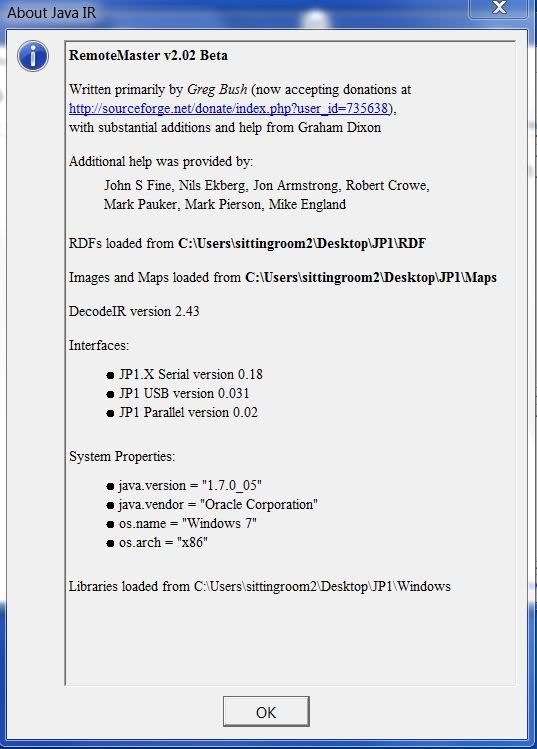EDIT: I MADE A BOO-BOO AND UPLOADED THE WRONG FILE



. I've now uploaded the right one, a .zip file rather than just the .jar file. No wonder you couldn't follow the instructions, tranx, but here anyway is the post that I had written to give you some more detail.
Hi tranx
You should only
need to replace the file RemoteMaster.jar in the RMIR installation folder. I suggest you first re-name the existing file (preferably by changing the extension, say to .bak) in case anything goes wrong, though, and then copy the new one into the folder. To be up-to-date you could also replace the file jp12serial.dll that is in the Windows subfolder of the RMIR installation folder, but this is strictly necessary only for JP1.4 and JP2 remotes.
After you make the replacement(s), start up RMIR as normally. It will probably say that it cannot find the RDF and map files. It gets the locations for these files from the RemoteMaster.properties file, and versions of RMIR later than yours create this file in the RMIR installation folder. Your version, and earlier ones, hide it away elsewhere when the OS is Vista or later. The simplest thing is just to let it create a new properties file by pointing it to the folders for these files, just as you would do in a fresh installation. The alternative is to find your existing RemoteMaster.properties file and copy it to the RMIR installation folder. I am not familiar with Windows 7, but in Vista it is located in the folder C:Users\<username>\AppData\Roaming\RemoteMaster. Be aware that this step, either moving the existing properties file or letting it create a new one, is one that you will have to take at some point since future official versions of RMIR will put it in this new location, so it is nothing to do with this being a development version.
In summary, the minimum you need do is replace the RemoteMaster.jar file and then, when you start RMIR, point it to the locations for the rdf and map files as if you were installing it from new. Replacing jp12serial.dll and moving the RemoteMaster.properties files are optional.
